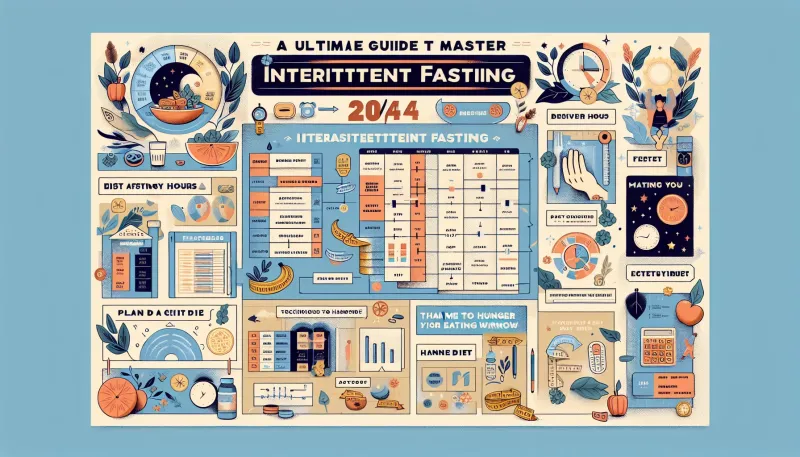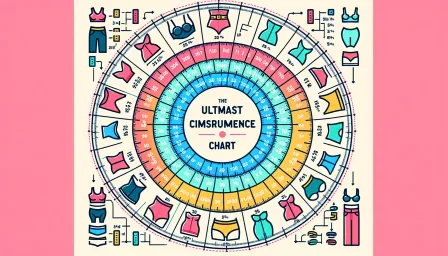Master Intermittent Fasting 20/4: The Ultimate Guide to Success

Discover the benefits, methods, and tips for mastering intermittent fasting 20/4. Achieve your health goals with our comprehensive guide to intermittent fasting.
Introduction
Intermittent fasting 20/4, also known as the Warrior Diet, is a form of time-restricted eating where individuals fast for 20 hours and eat all their daily calories within a 4-hour window. This method has gained popularity due to its potential health benefits, including weight loss, improved metabolic health, and mental clarity. In this comprehensive guide, we will explore everything you need to know to succeed with intermittent fasting 20/4.
What is Intermittent Fasting 20/4?
Intermittent fasting 20/4 is one of several intermittent fasting methods, which all involve cycling between periods of eating and fasting. This particular method extends the fasting period to 20 hours, leaving a 4-hour window for consuming food. The idea is to tap into the body's natural ability to burn fat and improve insulin sensitivity.
Benefits of the 20/4 Intermittent Fasting Method
Weight Loss
By limiting the eating window to 4 hours, you are likely to consume fewer calories, leading to weight loss. The extended fasting period also allows your body to tap into stored fat for energy.
Improved Metabolic Health
Intermittent fasting can help improve insulin sensitivity, which is beneficial for managing blood sugar levels and reduces the risk of type 2 diabetes. Additionally, fasting can promote autophagy, a natural process that cleans out damaged cells and regenerates new ones.
Mental Clarity
Many individuals report improved focus and mental clarity during fasting. This could be due to the stabilization of blood sugar levels and the production of ketones, which are used as an alternative energy source for the brain.
How to Start Intermittent Fasting 20/4
Ease into the Fast
If you are new to intermittent fasting, it is advisable to ease into the 20/4 method by gradually increasing your fasting window. Start with a 12-hour fast and slowly increase the duration over a few weeks.
Choose Your Eating Window Wisely
Select a 4-hour eating window that fits your lifestyle and daily schedule. Some people prefer eating in the evening, while others might find a midday to early evening window more manageable.
Stay Hydrated
During the fasting period, it is essential to stay hydrated by drinking plenty of water. Herbal teas and black coffee are also suitable options, but avoid any beverages with added sugars or calories.
Tips for Success
Plan Your Meals
Planning your meals ahead of time can help ensure you get all the necessary nutrients within the 4-hour eating window. Focus on whole, nutrient-dense foods like lean proteins, healthy fats, and a variety of vegetables.
Listen to Your Body
Pay attention to your body's signals during the fasting period. It is normal to feel hunger initially, but this should subside as your body adapts. If you feel unwell, it is important to break the fast and consume nutritious food.
Stay Consistent
Consistency is key to reaping the benefits of intermittent fasting. Stick to the 20/4 schedule as much as possible, even on weekends and holidays. This will help your body adapt and improve your results.
Common Challenges and How to Overcome Them
Hunger Pangs
Hunger is a common challenge when starting with intermittent fasting. To manage hunger, stay hydrated, drink herbal teas, and keep busy to distract yourself. Over time, your body will adjust, and hunger pangs will become less frequent.
Social Situations
Social events often revolve around food, which can be challenging when following a strict eating schedule. Plan ahead by adjusting your eating window for the day or choosing social activities that do not center around meals.
Fatigue
Some individuals may experience fatigue during the initial stages of intermittent fasting. Ensure you are getting enough sleep, managing stress, and consuming sufficient nutrients during the eating window to combat fatigue.
Who Should Avoid Intermittent Fasting 20/4?
While intermittent fasting can be beneficial, it is not suitable for everyone. Pregnant or breastfeeding women, individuals with a history of eating disorders, and those with certain medical conditions should avoid fasting. It is always advisable to consult with a healthcare professional before starting any new dietary regimen.
Conclusion
Intermittent fasting 20/4 can be a powerful tool for achieving your health and wellness goals. By understanding the benefits, planning your approach, and implementing key strategies for success, you can make the most of this fasting method. Remember to listen to your body, stay consistent, and seek advice from healthcare professionals when necessary. Start your journey to better health with intermittent fasting 20/4 today!



























